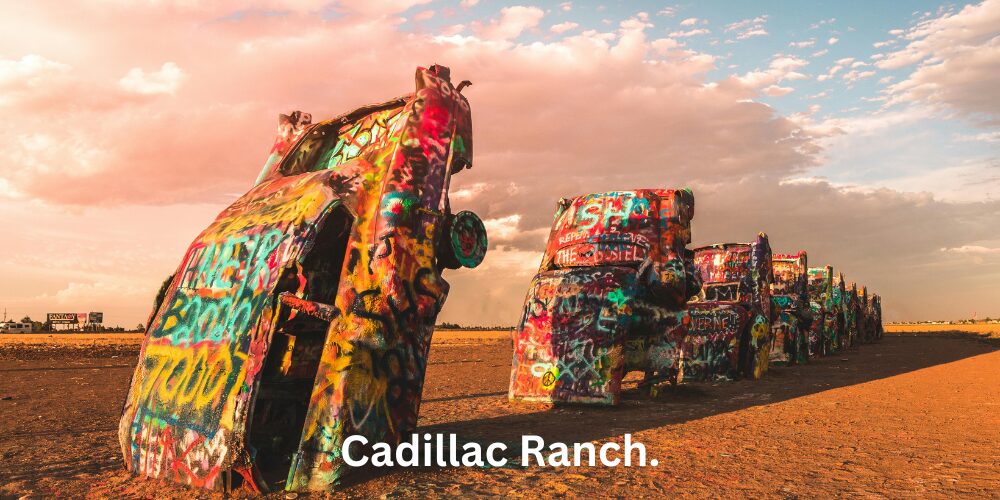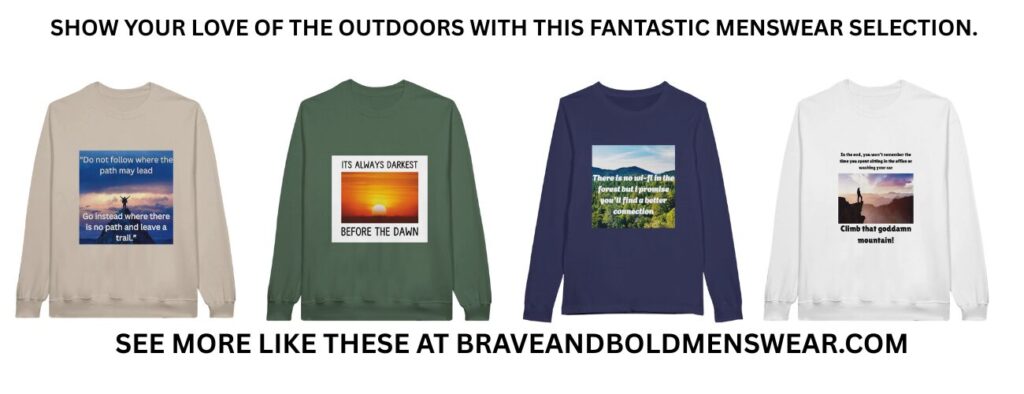Cadillac Ranch: Texas Steel, Spray Paint, and American Dreams
Introducing Cadillac Ranch. Rising out of the flat plains of Amarillo, Texas, ten old Cadillacs stand nose-first in the dirt, their tail fins jutting into the vast sky like strange, half-buried sculptures. It’s one of the most famous and delightfully bizarre roadside attractions in the United States.
It is part art installation, part social experiment, and part public canvas. Cadillac Ranch is a place where outsider art collides with pop culture. Visitors are encouraged not just to look, but to leave their own mark. It’s loud, weird, colorful, and wonderfully American.

The Birth of a Roadside Legend
Cadillac Ranch was created in 1974 by a San Francisco-based art collective known as the Ant Farm—architects and artists interested in counterculture, media, and Americana. Funded by eccentric millionaire Stanley Marsh 3, the group sought to create a public art installation in the heart of Texas that would capture the rise and fall of the tail fin Cadillac, a design symbol of post-war prosperity and automotive elegance.
They chose ten Cadillacs—from a 1949 Club Sedan to a 1963 Sedan de Ville—and buried them nose-down in the dirt along Route 66, each tilted at the same angle as the Great Pyramid of Giza. The result was striking: a gleaming row of steel monuments slowly rusting under the Texas sun, each car representing a specific era in Cadillac design history.
At first, it was a silent tribute to American engineering and ambition. But over the decades, Cadillac Ranch transformed into something much more interactive—and chaotic.
Click here for a Private Offshore Fishing Charter from Port Aransas.
From Sculpture to Spray Paint Playground
Almost immediately after its unveiling, visitors began interacting with Cadillac Ranch in a way no one expected: by spray-painting the cars. Instead of resisting the vandalism, Marsh and the Ant Farm welcomed it. In fact, they embraced it.
Today, graffiti is part of the experience. The original paint jobs disappeared long ago, replaced by ever-changing layers of neon, names, messages, slogans, jokes, wedding proposals, and Instagram handles. With every spray-painted swirl or scrawled “I was here,” Cadillac Ranch reinvents itself. It is a living, breathing canvas that belongs not just to its creators, but to everyone who visits.
Click here for a Private Fort Worth Heritage Journey Tour from Dallas.
People bring their own paint cans, or they pick up leftovers scattered around the dirt. Children, artists, wanderers, and tourists from all over the world come here not just to see—but to participate. The layers of paint are now inches thick, flaking like bark from an urban tree. In fact, it’s estimated that the cars gain hundreds of pounds in paint every year.

A Symbol of Freedom, Decay, and Creativity
Cadillac Ranch is more than just a quirky photo stop. It taps into the heart of American culture—its love of the open road, obsession with automobiles, and rebellious spirit of self-expression. These Cadillacs were once status symbols of wealth and luxury, now half-buried in a field, covered in graffiti. There’s something poetic, even haunting, about that transformation.
Click here for a Austin Yacht Charter Experience on Lake Travis
The installation represents the impermanence of fame, materialism, and cultural relevance. Once-pristine cars are now rusted shells, and yet in their decline, they’ve become something arguably more beautiful and powerful. They’re not dead—they’re reborn as art.
For many, Cadillac Ranch is also a celebration of Route 66—the “Mother Road” that once symbolized westward dreams and freedom. Though parts of Route 66 have faded into nostalgia, Cadillac Ranch remains a vibrant, spray-painted heartbeat of that mythic American journey.
Click here for a private three day aerial safari
Finding Cadillac Ranch
Cadillac Ranch is located just west of Amarillo, Texas, off Interstate 40 (which runs parallel to old Route 66). There are no big billboards or flashy signs—just a simple gate along a frontage road, leading into a dusty field. The installation is free to visit and open 24/7. Day or night, rain or shine, the Ranch is there, waiting for the next creative soul to add their voice to its chorus of colors.
Visitors park along the road and walk a short distance through the Texas dirt. On most days, the wind blows hard, the sky is big, and you can hear spray cans hissing like firecrackers in the distance. It’s raw, uncurated, and completely authentic.
There’s no gift shop (though nearby vendors sometimes sell spray paint), no velvet ropes, and no park rangers. It’s one of the few places where you’re actually encouraged to deface the art—and in doing so, you become part of its story.
Click here for a New York to Montauk fly fishing tour.
Cultural Fame and Pop Appearances
Over the years, Cadillac Ranch has popped up in music videos, movies, TV shows, and countless road trip blogs. Bruce Springsteen even wrote a song about it—“Cadillac Ranch”—turning the installation into a metaphor for mortality and legacy.
Artists and musicians have cited it as an influence. Travelers come from across the globe to photograph it, paint it, and be inspired by it. It’s appeared in everything from Disney’s Cars to art history textbooks, proof of its unique position in American culture.
Tips for First-Time Visitors
If you’re planning a trip to Cadillac Ranch, here are a few tips:
- Bring spray paint. Or pick up what others have left behind. It’s a chance to be part of something much bigger than yourself.
- Dress for dust and wind. The Texas plains are no joke, especially in summer.
- Respect the site. While graffiti is welcome, trash isn’t. Be mindful not to litter.
- Visit at sunrise or sunset. The lighting is spectacular, and the colors pop even more against the golden Texas sky.
- Take photos—but leave a message too. Your artwork may be short-lived, but it will be part of the ever-evolving story.
Click here for a day trip from Manhattan to Niagara Falls.
Conclusion: America’s Odd, Beautiful Canvas
In a world of over-produced attractions and manicured monuments, Cadillac Ranch remains refreshingly honest. It doesn’t ask for reverence—it asks for engagement. It’s gritty, dusty, a little strange—and absolutely unforgettable.
Cadillac Ranch is America unfiltered: a bold, sometimes messy, always evolving testament to creativity, freedom, and self-expression. It invites every traveler not just to look, but to participate—to leave a mark, even if only for a moment, on something bigger than themselves.
Click here to read about one of the most beautiful places on Earth.
And in doing so, it captures the real magic of the open road: the belief that art belongs to everyone, and that even in the middle of nowhere, something wildly meaningful can grow.

